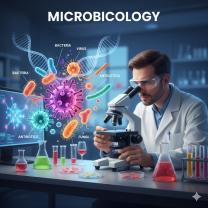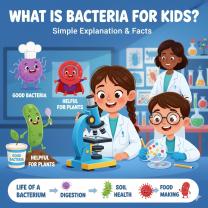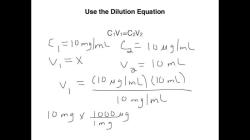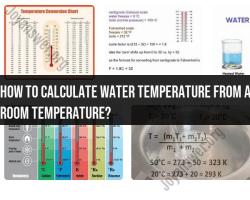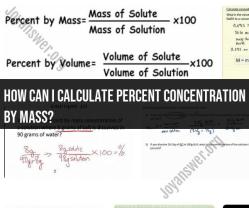What are the most important steps of photosynthesis?
Photosynthesis is a complex process by which green plants, algae, and some bacteria convert light energy into chemical energy in the form of glucose (a type of sugar). It is one of the most important biological processes on Earth as it provides oxygen and serves as the foundation for most ecosystems. The key steps in the process of photosynthesis can be summarized as follows:
Light Absorption: Photosynthesis begins when chlorophyll and other pigments in the chloroplasts of plant cells absorb light energy from the sun. Chlorophyll is the green pigment responsible for capturing light.
Light Reactions (Photolysis): In the thylakoid membranes of chloroplasts, the absorbed light energy is used to split water molecules (photolysis) into oxygen and protons. This process releases oxygen as a byproduct and generates energy-rich molecules (ATP and NADPH).
Calvin Cycle (Dark Reactions): The ATP and NADPH generated in the light reactions are then used in the Calvin Cycle, also known as the dark reactions or the light-independent reactions. During this phase, carbon dioxide from the atmosphere is fixed into organic molecules, typically in the form of a three-carbon compound called 3-phosphoglycerate.
Carbon Fixation: Carbon dioxide is captured and combined with a five-carbon compound called ribulose-1,5-bisphosphate (RuBP) through the enzyme ribulose-1,5-bisphosphate carboxylase/oxygenase (RuBisCO). This reaction produces two molecules of 3-phosphoglycerate.
Reduction Phase: The 3-phosphoglycerate molecules are then reduced using ATP and NADPH generated in the light reactions. This leads to the formation of a three-carbon sugar, glyceraldehyde-3-phosphate (G3P).
Regeneration of RuBP: Some of the G3P molecules are used to regenerate RuBP, a critical step in ensuring the continuity of the Calvin Cycle.
Glucose Production: The remaining G3P molecules are used to synthesize glucose and other organic molecules. Glucose is a primary product of photosynthesis and serves as an energy source for the plant.
Release of Oxygen: As a byproduct of the light reactions, oxygen gas (O2) is released into the atmosphere, which is crucial for aerobic respiration and life on Earth.
It's important to note that photosynthesis is not just a single reaction but a complex series of reactions that involve multiple enzymes, co-factors, and cellular structures. The overall process can be summarized as the conversion of carbon dioxide and water into glucose and oxygen, driven by light energy and facilitated by chlorophyll and other pigments in plants and photosynthetic organisms.
Key Steps in the Process of Photosynthesis
Photosynthesis is the process by which plants use sunlight to convert carbon dioxide and water into oxygen and glucose. This process is essential for life on Earth, as it provides the oxygen that we breathe and the food that we eat.
Photosynthesis can be divided into two main stages: the light-dependent reactions and the Calvin cycle.
Light-dependent reactions: The light-dependent reactions occur in the thylakoid membranes of chloroplasts. In these reactions, light energy is used to split water molecules into hydrogen and oxygen. The oxygen is released into the atmosphere, and the hydrogen is used to produce ATP and NADPH. ATP is the energy currency of the cell, and NADPH is a reducing agent that provides electrons for the Calvin cycle.
Calvin cycle: The Calvin cycle occurs in the stroma of chloroplasts. In these reactions, ATP and NADPH from the light-dependent reactions are used to convert carbon dioxide into glucose. Glucose is a sugar that plants use for energy and to build new cells.
Understanding the Stages and Mechanisms of Photosynthesis
The light-dependent reactions of photosynthesis are powered by sunlight. When a photon of light strikes a chlorophyll molecule, it excites an electron in the chlorophyll molecule. This electron is then transferred to a series of electron carriers. As the electron moves through the electron carriers, it loses energy. This energy is used to pump protons across the thylakoid membrane. The accumulation of protons on one side of the membrane creates a proton gradient. This proton gradient drives the synthesis of ATP.
The Calvin cycle is powered by ATP and NADPH from the light-dependent reactions. In these reactions, carbon dioxide is fixed into a molecule called glyceraldehyde 3-phosphate (G3P). G3P is a three-carbon sugar that can be used to make glucose and other carbohydrates.
Photosynthesis: Nature's Energy Conversion Process
Photosynthesis is a remarkable process that converts light energy into chemical energy. This chemical energy is then used to synthesize glucose and other carbohydrates. Glucose is the primary food source for all life on Earth.
Photosynthesis is also essential for the production of oxygen. Oxygen is a gas that is essential for aerobic respiration. Aerobic respiration is the process by which cells convert glucose into energy.
Overall, photosynthesis is a vital process for life on Earth. It provides the oxygen that we breathe and the food that we eat. It also helps to regulate the Earth's climate.


